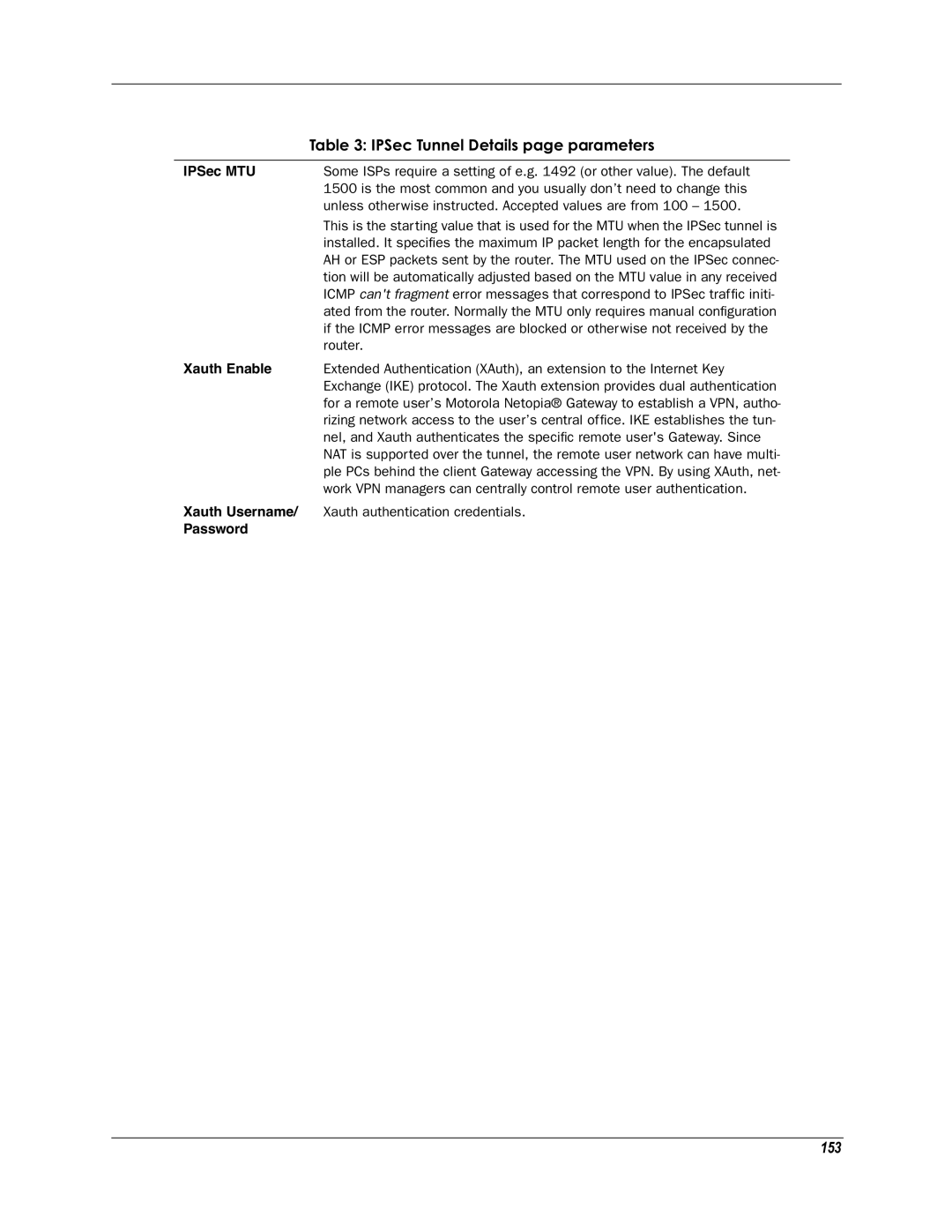
| Table 3: IPSec Tunnel Details page parameters |
|
|
IPSec MTU | Some ISPs require a setting of e.g. 1492 (or other value). The default |
| 1500 is the most common and you usually don’t need to change this |
| unless otherwise instructed. Accepted values are from 100 – 1500. |
| This is the starting value that is used for the MTU when the IPSec tunnel is |
| installed. It specifies the maximum IP packet length for the encapsulated |
| AH or ESP packets sent by the router. The MTU used on the IPSec connec- |
| tion will be automatically adjusted based on the MTU value in any received |
| ICMP can't fragment error messages that correspond to IPSec traffic initi- |
| ated from the router. Normally the MTU only requires manual configuration |
| if the ICMP error messages are blocked or otherwise not received by the |
| router. |
Xauth Enable | Extended Authentication (XAuth), an extension to the Internet Key |
| Exchange (IKE) protocol. The Xauth extension provides dual authentication |
| for a remote user’s Motorola Netopia® Gateway to establish a VPN, autho- |
| rizing network access to the user’s central office. IKE establishes the tun- |
| nel, and Xauth authenticates the specific remote user's Gateway. Since |
| NAT is supported over the tunnel, the remote user network can have multi- |
| ple PCs behind the client Gateway accessing the VPN. By using XAuth, net- |
| work VPN managers can centrally control remote user authentication. |
Xauth Username/ | Xauth authentication credentials. |
Password |
|
